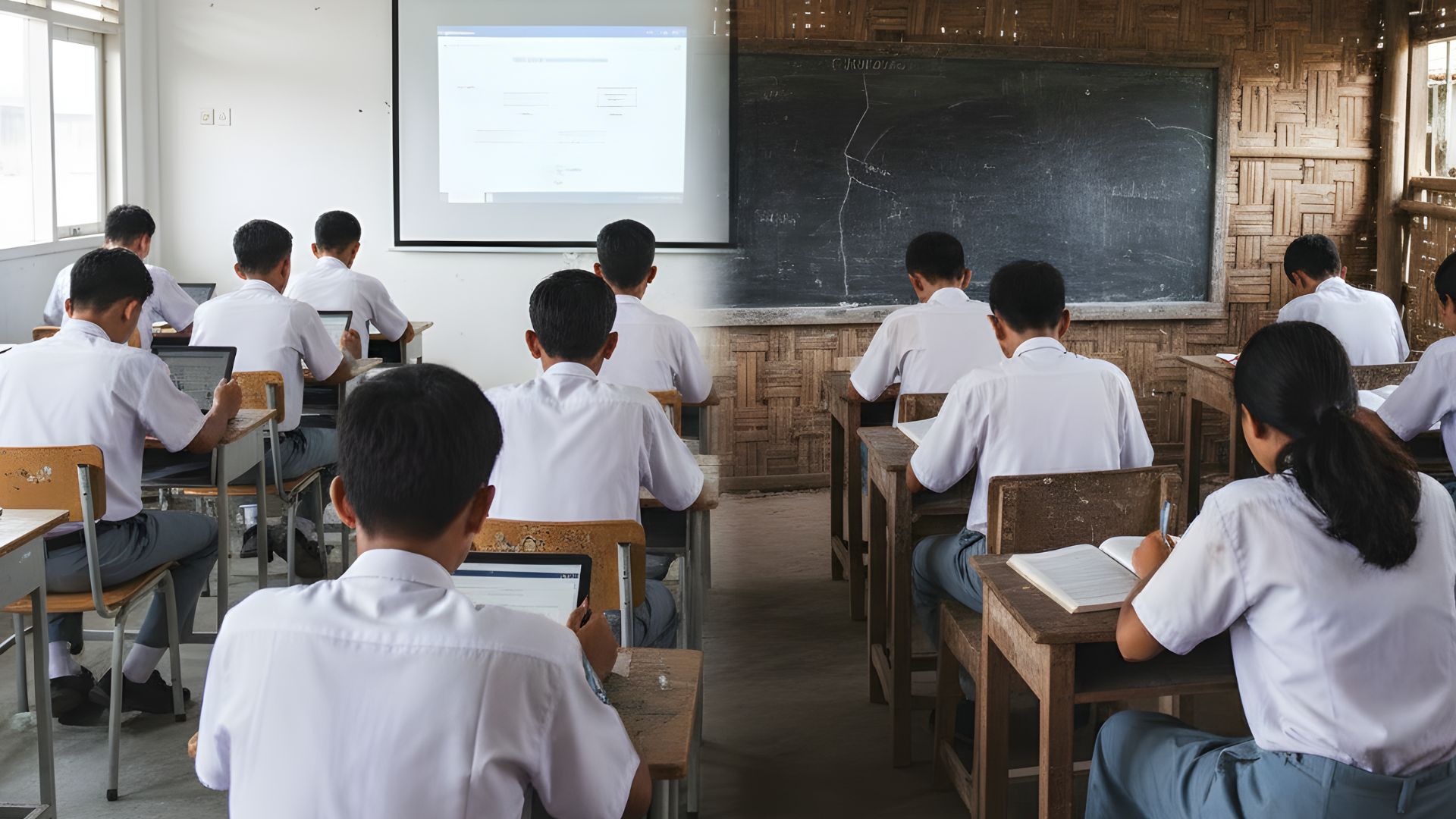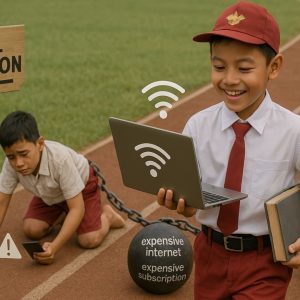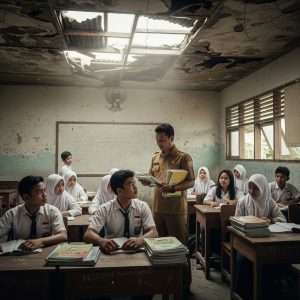By Pendidikan.id

When media outlets talk about Indonesian education, the spotlight usually falls on elite private schools in Jakarta, smart campuses in Surabaya, or students winning international awards. These stories are inspiring—but they hide a more urgent reality: for the vast majority of Indonesians, the education system remains deeply unequal, invisible, and stuck.
The Iceberg: Two Indonesias
Think of the education system as an iceberg:
- Above the surface (top 10%): Affluent families in major cities. These students have access to fast broadband, pay for subscription-based edtech, attend schools with state-of-the-art facilities. Tuition fees in these schools often exceed the Indonesian minimum wage.
- Below the surface (remaining ~90%): Students living across remote districts, spread over Indonesia’s 17,000+ islands. Many have no reliable internet, can’t afford subscriptions, and depend entirely on underresourced public schools. These schools often lack qualified teachers, basic digital infrastructure, and sufficient learning materials.
Some of the problems:
- Teachers are underqualified, stretched thin, or responsible for multiple grades.
- In some places, there is simply no teacher—students sit in classrooms with no educator present.
- The performance gap is visible in international assessments. In PISA 2022, Indonesia scored much lower than OECD peers:
– Maths: 366 vs OECD average ~472
– Reading: 359 vs ~476
– Science: 383 vs ~485
– Only ~18% of students reached Level 2 proficiency in mathematics, far below the OECD baseline of ~69%.
These numbers show that for decades, outcomes have stagnated—and the divide between the well-served and the left-behind remains wide.
Big Devices. Small Impact.
To bridge the digital divide, the government has made large investments in hardware:
- 1.2 million Chromebooks were distributed under a past education minister—now mired in legal controversy over procurement worth ~Rp 9.9 trillion.
- In 2025, the Ministry of Education plans to distribute 288,000 Interactive Flat Panels (IFPs) to schools across the country.
But there’s a catch: devices alone don’t teach.
Without high-quality, locally relevant content AND trained teachers, these devices often become nothing more than expensive, unused decorations. In many remote regions, where internet access is weak or non-existent, technology interventions like Chromebooks fail because students and teachers cannot access the resources they’re designed to use.
The Real Fix: Devices + Kipin Learning System = Real Change
Building internet infrastructure to reach every island would take decades and cost too much. Even if the internet arrived, high-quality educational content is still often unavailable offline or locked behind paywalls.
The better path: package devices with a complete learning system. That’s where Kipin comes in. Here’s why Kipin + device distribution is far more powerful than devices alone:
- Offline local server preloaded with 60,000+ learning materials: textbooks, instructional videos, exercises, interactive media.
- No internet needed—the system works via local networks/WiFi “EduSpot”, so schools in remote or connectivity-limited areas aren’t left out.
- Kipin School software acts like a file server and digital library; students, teachers, and parents can access all materials smoothly, even without online access.
- Students can take materials home on offline devices. Everything is free within the Kipin app.
- When used alongside IFPs or laptops, Kipin transforms hardware into a fully functioning learning ecosystem—not just flashy gadgets.
- Already, 3,000+ schools in Indonesia use Kipin; several local governments are buying Kipin to complement IFP rollouts.
The Way Forward: How Policy Can Make a Difference
To genuinely improve K–12 education, policymakers need to change the focus:
- Always package devices with a full digital content system—like Kipin—rather than distributing hardware alone.
- Train teachers in digital pedagogy, using tools like Kipin’s video and book series, especially in underresourced districts.
- Shape procurement policies to emphasize learning outcomes—not just the number of devices delivered. Devices should come bundled with quality content and systems.
- Scale proven models like Kipin—models already working in real schools and across diverse contexts.
If Indonesia repeats the same device-centred approach—pouring money into hardware without content, teacher training, or infrastructure—it risks another cycle of disappointment. The real revolution in education lies not in the devices; it’s in making learning accessible, resilient, and equitable for every child, no matter where they live.
Contact Us:
Web : kipin.id
Email : info@kipin.id
WA Chat : wa.me/6281233601047



